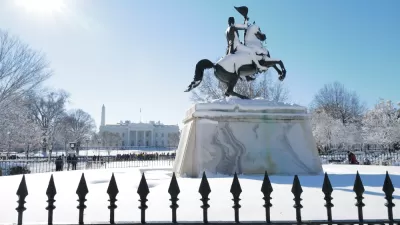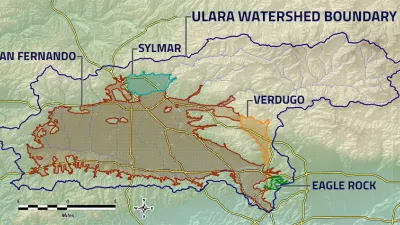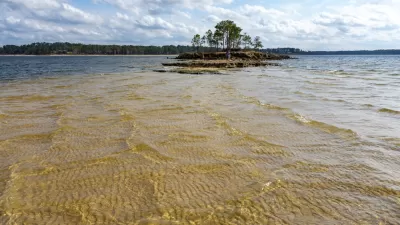The Central Iron County Water Conservancy District wants new sources of water so communities in the Cedar Valley in Utah can continue to grow. It's a story as old as the American West.

Gabrielle Canon reports for the Guardian on a controversial effort by cities located in Cedar Valley, Utah to secure more water for continued growth.
The ground in Cedar Valley is sinking and splintering. Fissures that snake through the region are a visible sign of Utah’s water woes, and the result of years spent overdrawing from an underground aquifer that supplies the area. [....] And yet Cedar City, at the heart of the valley, continues to grow. Visitors flock to nearby national parks such as Zion and Bryce Canyon, adding to the flow of new residents expected to move here in the coming years. Cedar City is already the most populous in Utah’s Iron county, and finding more water has become an existential quest.
To find more water to continue growing, Cedar Valley has identified nearby Beaver County as a potential source for new water import projects. The proposal has provoked opposition from environmentalists, ranchers, tribes, and officials from other counties, according to the article. The Central Iron County Water Conservancy District (CICWCD) has been seeking water from the Beaver Valley since 2006, according to the article, and has already cleared several legal hurdles, including a 2019 settlement that "cleared the way for the agency to seek federal approval to begin pumping," according to Canon. Still, any project to draw water from Beaver Valley will require approval from the Bureau of Land Management.
The controversy is familiar: "The battle is just the latest frontline in the water wars of the American west that have defined Utah’s history," writes Canon. Planetizen has been tracking water controversies in Utah over the years, including a recent decision by the town of Oakley to halt all development due to water supply uncertainties.
- Utah Debates Solutions to Water Shortage (December 2021)
- Utah Wants to Build Water Pipeline Amid Historic Shortages (September 2021)
- Water Supply Concerns Prompt Development Moratorium in Utah Town (June 2021)
- Changes for Big Pipeline Project to Connect Utah to the Colorado River (September 2019)
- This Is What Really, Really Cheap Water Is Actually Costing Utah (March 2018)
FULL STORY: A Utah town is running dry. Its solution stoked an age-old water war

Planetizen Federal Action Tracker
A weekly monitor of how Trump’s orders and actions are impacting planners and planning in America.

Map: Where Senate Republicans Want to Sell Your Public Lands
For public land advocates, the Senate Republicans’ proposal to sell millions of acres of public land in the West is “the biggest fight of their careers.”

Restaurant Patios Were a Pandemic Win — Why Were They so Hard to Keep?
Social distancing requirements and changes in travel patterns prompted cities to pilot new uses for street and sidewalk space. Then it got complicated.

Platform Pilsner: Vancouver Transit Agency Releases... a Beer?
TransLink will receive a portion of every sale of the four-pack.

Toronto Weighs Cheaper Transit, Parking Hikes for Major Events
Special event rates would take effect during large festivals, sports games and concerts to ‘discourage driving, manage congestion and free up space for transit.”

Berlin to Consider Car-Free Zone Larger Than Manhattan
The area bound by the 22-mile Ringbahn would still allow 12 uses of a private automobile per year per person, and several other exemptions.
Urban Design for Planners 1: Software Tools
This six-course series explores essential urban design concepts using open source software and equips planners with the tools they need to participate fully in the urban design process.
Planning for Universal Design
Learn the tools for implementing Universal Design in planning regulations.
Heyer Gruel & Associates PA
JM Goldson LLC
Custer County Colorado
City of Camden Redevelopment Agency
City of Astoria
Transportation Research & Education Center (TREC) at Portland State University
Camden Redevelopment Agency
City of Claremont
Municipality of Princeton (NJ)





























